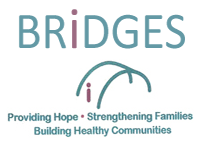 YOU(th) Decide: Local agency joins forces with the New York Council on Problem Gambling
YOU(th) Decide: Local agency joins forces with the New York Council on Problem Gambling
BRiDGES Council on Alcoholism and Substance Abuse has partnered with the New York Council on Problem Gambling to carry out YOU(th) Decide in Madison County; 2018 marks the seventh year that
the New York Council on Problem Gambling has worked with local providers in an effort to prevent underage and problem gambling.
YOU(th) Decide is designed to be a multi-dimensional prevention effort aimed at reducing underage gambling. Local providers participating in the YOU(th) Decide Project will educate youth, work with local community leaders to decrease youth availability to gambling activities and will conduct media and outreach campaigns.
The most recent research indicates that among New York state youth between the ages of 12 and 17,
39.5 percent of youth between the ages of 12 and 17 have gambled in the past year. Nearly 30 percent of those youth stated that they began at age 10 or younger. NYS Youth who gamble reported higher past 30-day rates of alcohol use, marijuana use, consumption of energy drinks and incidents of being drunk than non-gamblers.
The top three past-year gambling behaviors among seventh- through 12th-graders in the state were playing lottery, lotto and scratch offs; betting money on raffles or charity games; and betting money on sports (OASAS, 2014-15).
Underage gambling brings with it a number of negative consequences, many of which are serious, and
can be devastating to the youth as well as his or her family and friends. The younger an adolescent begins gambling, the more likely he or she is to develop a gambling addiction. Underage gamblers are at an increased risk of delinquency and crime, damaged relationships and poor academic performance (Wynne et al., 1996).
Youth who gamble are also more likely than their non-gambling peers to develop mental health issues, including depression and alcoholor substance abuse disorders (Hardoon et al, 2002), to attempt suicide (Gupta and Derevensky, 1998) and to maintain poor general health (Potenza et al, 2002).
There is not just one person, nor just one group of people, affected by underage gambling. There is not just one risk factor or protective factor that plays a role in underage gambling. There is not just one strategy that will, alone, prevent underage gambling. A variety of strategies targeted at all levels of impact is the only effective way to prevent and de-normalize underage gambling.
If you, or your child, would like to learn more about YOU(th) Decide, or would like to get involved,
contact BRiDGES 315.697.3947.

